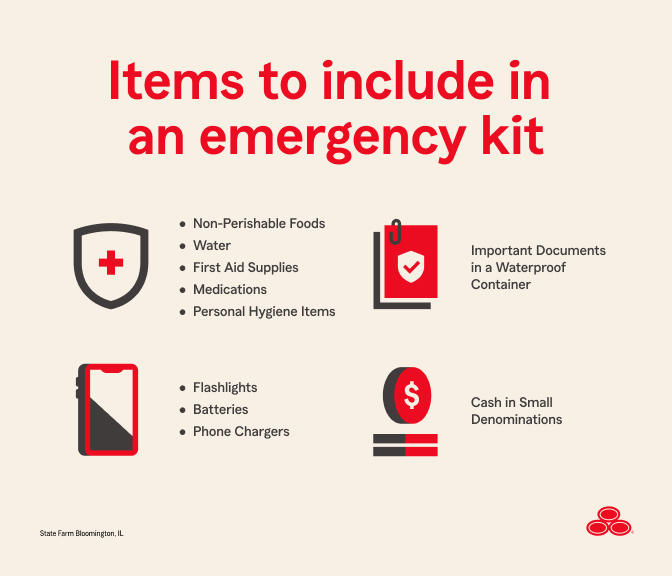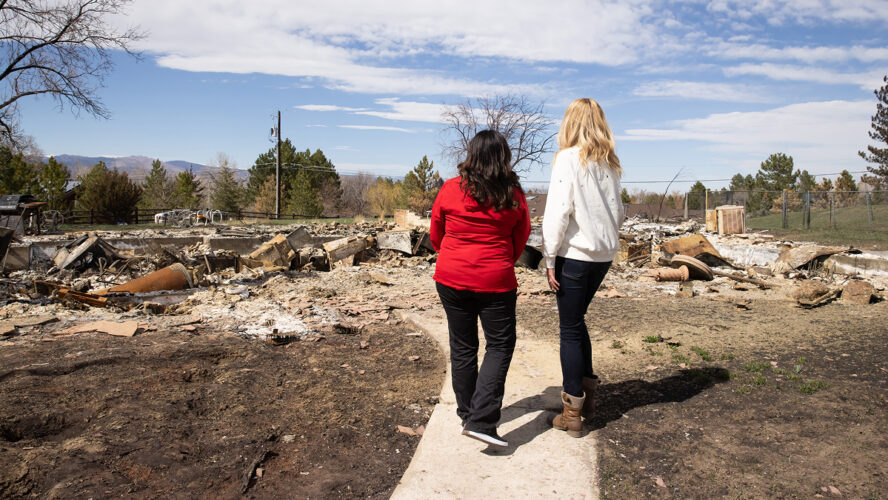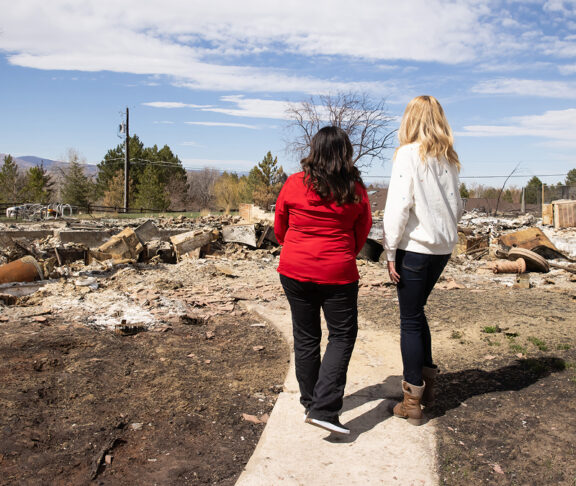Weather disasters can disrupt everyday life, causing injury, property loss, and financial hardship. But with proactive planning, recovering can be easier. Preparation includes securing your home and auto and having a clear communication, evacuation, and recovery plan.
Meet with your agent and understand your insurance coverage
- Know what your homeowners insurance covers. Floods and earthquakes typically are not covered in a standard policy, so consider additional options if you live in higher-risk areas.
- Review coverage limits and deductibles regularly to ensure they meet your needs.
- Create a home contents inventory (list, pictures, or even a video), documentation that can help speed up the claims and recovery process.
Create an emergency plan
- Discuss emergency scenarios with your household.
- Develop an easy-to-understand plan — emergency contacts, meet up locations, and evacuation and transportation plans.
- Don’t forget pets! Have carriers, food, and vet contacts ready. Practice your plan regularly.
Build an emergency supply kit

Plan for at least 72 hours of basic supplies (see ready.gov/kit for a helpful list):
- Non-perishable food and water (one gallon per day, per person)
- First aid supplies and prescription medications
- Flashlights, batteries, and portable phone chargers
- Important documents (insurance policies, IDs, medical records) in a waterproof container
- Personal hygiene items and cash in small denominations
Secure your home and auto
- Install storm shutters for windows and doors.
- Regularly clear gutters and drains to prevent flooding, trim trees and remove dead branches, and secure outdoor furniture/loose items.
- If the forecast calls for hail, park your vehicle under a shelter or in a garage.
Stay informed
- Sign up for local emergency alerts and weather notifications.
- Keep a battery-powered or hand-crank radio for updates if power is lost.
- Follow trusted sources like the National Weather Service, local news, and state emergency management offices.
Begin the recovery process
Safety first
- Ensure your family is safe and accounted for.
- Only return home when authorities say it’s safe.
- Watch for downed power lines, gas leaks, or contaminated water.
When safe to do so — document damage thoroughly
- Take photos and videos of all the damage.
- Make temporary repairs to prevent additional damage. Keep receipts for supplies and repairs.
- Homeowners policies typically cover sudden accidental losses like hail, wind, and fire so contact your insurance provider and start your claim as soon it’s safe to do so.
Beware of scammers!
- Beware of unsolicited repair offers.
- Work only with licensed professionals and carefully verify credentials.
- Obtain detailed written estimates and multiple bids, and don’t sign anything until you have spoken with your insurance provider.
“2024 was another big year for catastrophic weather, exceeding the previous high set the year before,” said Wensley Herbert, State Farm P&C Claims senior vice president. “Helping nearly a million customers a year recover from catastrophic weather events is core to our promise of helping people recover. It’s who we are, and it is a big part of why so many choose State Farm for their insurance and financial needs.”
Important terms
- National Flood Insurance Program (NFIP): Flood insurance for homeowners, separate from standard policies, available through FEMA.
- Comprehensive coverage: Vehicle protection for damage caused by weather or disasters.
- Home inventory: A detailed list or video of your belongings can speed up the recovery process.


